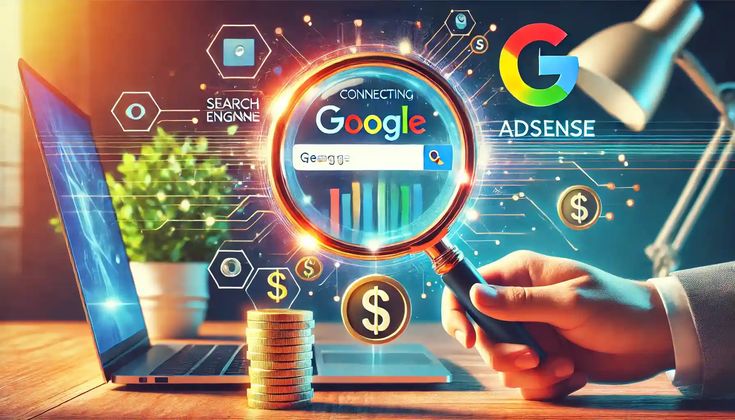What is the SEO with AI technologies and tools ?
Search Engine Optimization (SEO) has evolved dramatically over the years, and 2025 is no exception. With the integration of advanced Artificial Intelligence (AI) technologies, SEO has become more intelligent, precise, and result-oriented. This blog delves into how SEO works, the latest AI-driven tools and algorithms, and why SEO remains critical in the digital landscape.
What is SEO?
SEO, or Search Engine Optimization, is the process of optimizing a website to rank higher on search engine results pages (SERPs). The goal is to increase organic (non-paid) traffic by improving the visibility of a website for relevant queries. SEO encompasses various strategies, including:
- On-Page SEO : Optimizing content, keywords, meta tags, and internal links.
- Off-Page SEO : Building backlinks and improving domain authority.
- Technical SEO : Enhancing site speed, mobile responsiveness, and crawlability.
- Content SEO : Creating valuable, user-centric content tailored to search intent.
How SEO Works?
SEO relies on search engine algorithms to determine how content is ranked. These algorithms assess factors such as relevance, authority, and user experience. Here's a breakdown of how SEO functions:
1. Crawling and Indexing
Search engines use bots (or spiders) to crawl the web and index pages. This process helps search engines understand what your content is about.
2. Ranking Algorithms
Algorithms analyze hundreds of ranking factors, including:
- Keywords : Relevance to search queries.
- Backlinks : Quantity and quality of inbound links.
- User Engagement : Metrics like click-through rate (CTR) and dwell time.
- Technical Performance : Page load speed, mobile-friendliness, and security (HTTPS).
3. Machine Learning in Algorithms
AI technologies such as Google’s RankBrain and BERT analyze the intent behind search queries, ensuring that results match user needs.
SEO in 2025: The Role of AI Technologies
AI is revolutionizing the way SEO strategies are developed and implemented. Let’s explore some AI technologies that are reshaping SEO in 2025:
1. AI-Powered Content Creation
Tools like ChatGPT and Jasper AI help generate SEO-optimized content. By analyzing keyword trends and user intent, these tools create engaging and relevant articles.
2. Voice Search Optimization
With the rise of virtual assistants like Alexa and Google Assistant, voice search optimization is crucial. AI tools can analyze long-tail conversational keywords to improve rankings for voice queries.
3. Predictive Analytics
AI tools like SEMrush and Ahrefs offer predictive insights by analyzing historical data and trends, helping marketers anticipate what users might search for next.
4. Image and Video SEO
Advanced AI tools optimize images and videos for search engines. Technologies like Google Vision API ensure that visual content is properly tagged and indexed.
5. Real-Time Data Analysis
AI-based platforms like BrightEdge provide real-time SEO performance insights, allowing marketers to make immediate adjustments.
SEO Algorithms to Watch in 2025
1. Google’s Multitask Unified Model (MUM)
Google’s MUM algorithm can understand and generate language across 75 languages. It’s designed to handle complex queries and deliver multimodal search results (text, images, and videos).
2. BERT (Bidirectional Encoder Representations from Transformers)
BERT focuses on understanding the context of words in a search query, enabling more accurate results.
3. RankBrain
RankBrain uses machine learning to analyze and interpret search queries, emphasizing user satisfaction and search intent.
4. E-A-T (Expertise, Authoritativeness, Trustworthiness)
Search engines prioritize content that demonstrates E-A-T, especially for YMYL (Your Money or Your Life) topics.
Importance of SEO in 2025
1. Driving Organic Traffic
SEO remains the most cost-effective way to drive organic traffic, reducing dependency on paid advertisements.
2. Building Credibility and Trust
High-ranking websites are perceived as more credible. SEO strategies like acquiring quality backlinks and producing authoritative content build trust with users.
3. Enhancing User Experience
With Core Web Vitals now a ranking factor, SEO ensures that websites offer excellent loading speed, interactivity, and visual stability.
4. Competing in Voice and Visual Search
With AI tools optimizing voice and visual search, businesses can stay ahead of the competition.

Business Strategy
What is the Google Ads - PPC and how to use it for your business. How Google Ads working and what is PPC advertise... Read More
Marketing Strategy
Fundamental of digital marketing services with AI technologies and tools. Marketing on social media platforms enhance digital presence... Read More
Business Strategy
How a Small Business Doubled Its Sales with Digital Marketing Exploring the digital marketing strategies that helped a small business double its sales. Read More